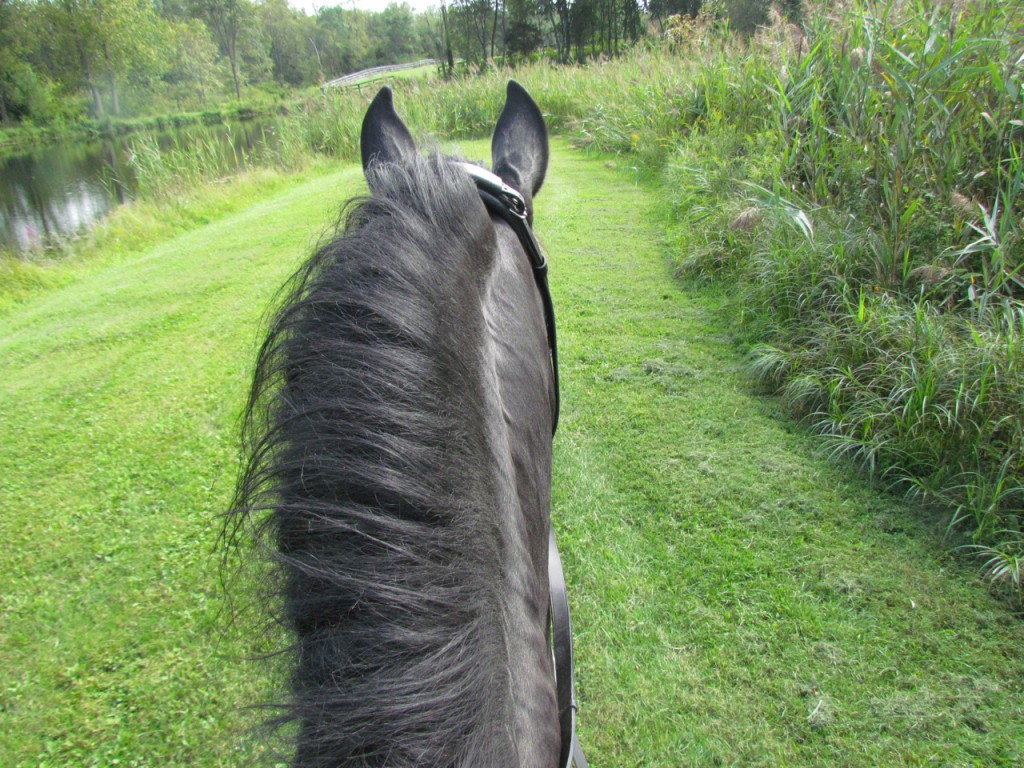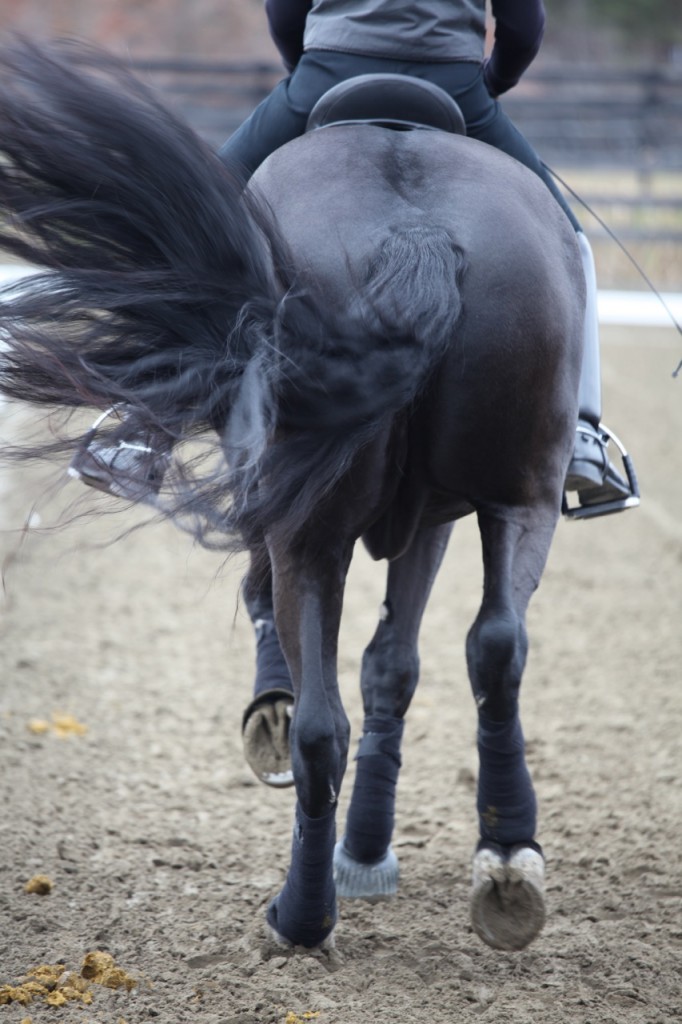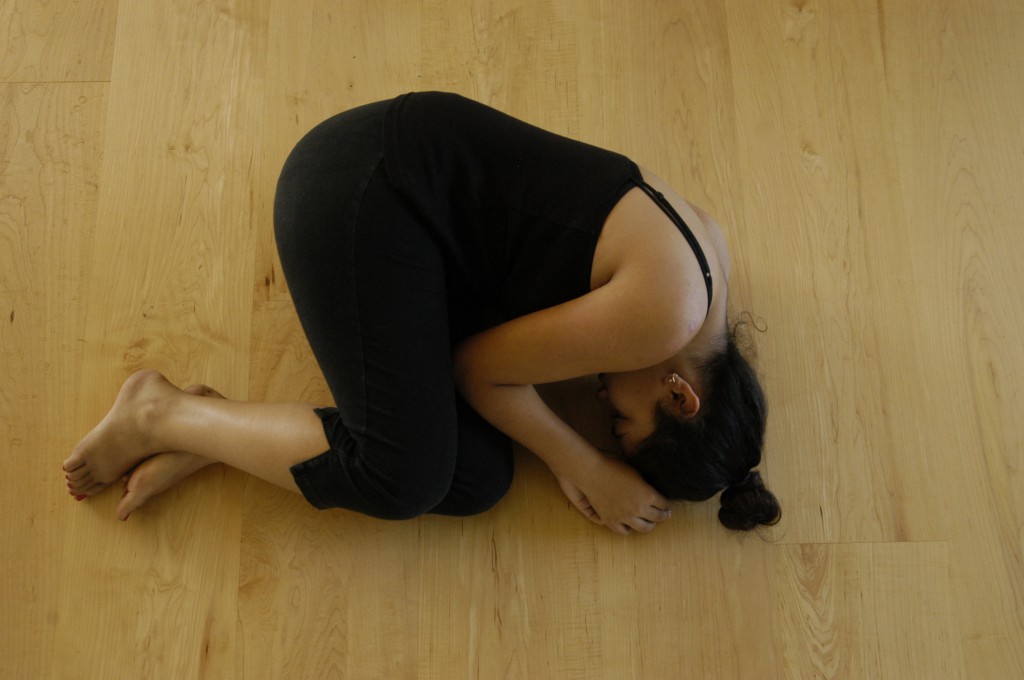Sensing and feeling the mid-line can be a challenge when most of us feel out of kilter and out of balance a lot of the time. A couple weeks ago my lovely Amadeo had a nice big buck while I was riding. I was feeling fragile emotionally, and so not quick enough to come up out of the saddle to protect myself. The result: a coccyx sprain. I walked around feeling rotated, disconnected and fragmented until my next osteopathy appointment. It was frustrating and interesting to feel that off my mid-line. Andy Goldman, my osteopath, encouraged me to ride my mid-line in sync with the mid-line of the horse. So on my next ride, I paid attention to my newly centered tailbone, feeling it connect to the horse’s tail, and sending my energy up my spine through the center of the occipital ridge while seeing/feeling the horse’s poll.
The result was a surprising deliciousness and sense of connection and balance in the ride. I also noticed that Deo’s crookedness tracking right was connected to the way I close the space between my right shoulder and sternum (shifting my mid-line too far to the left), effectively closing the door to his ability to open to the right! When I opened that space, with a feeling of widening and softening, he began to straighten and soften!
Revelations!
Then today, while coaching a performer (the lovely Sari Max), I asked her to notice her mid-line with a couple somatic exercises of moving away from and then back onto a centered mid-line. Then I asked her to move from lying down to standing pausing along the way to look at where her mid-line was in that moment, The result was that her movement from floor to standing was beautifully effortless and grounded. Then we took that same sense of mid-line into the text of the play, connecting a physical sense of center and balance to the emotional through-line of each line. The result was a deeper authenticity and groundedness in the language and movement. Brilliant and transformational!



